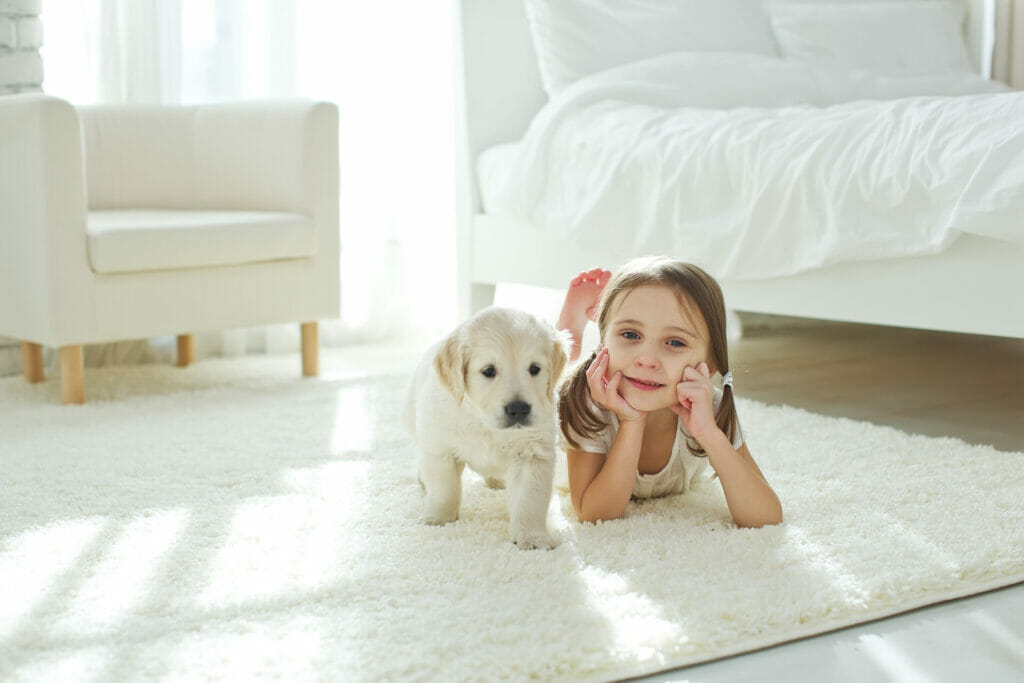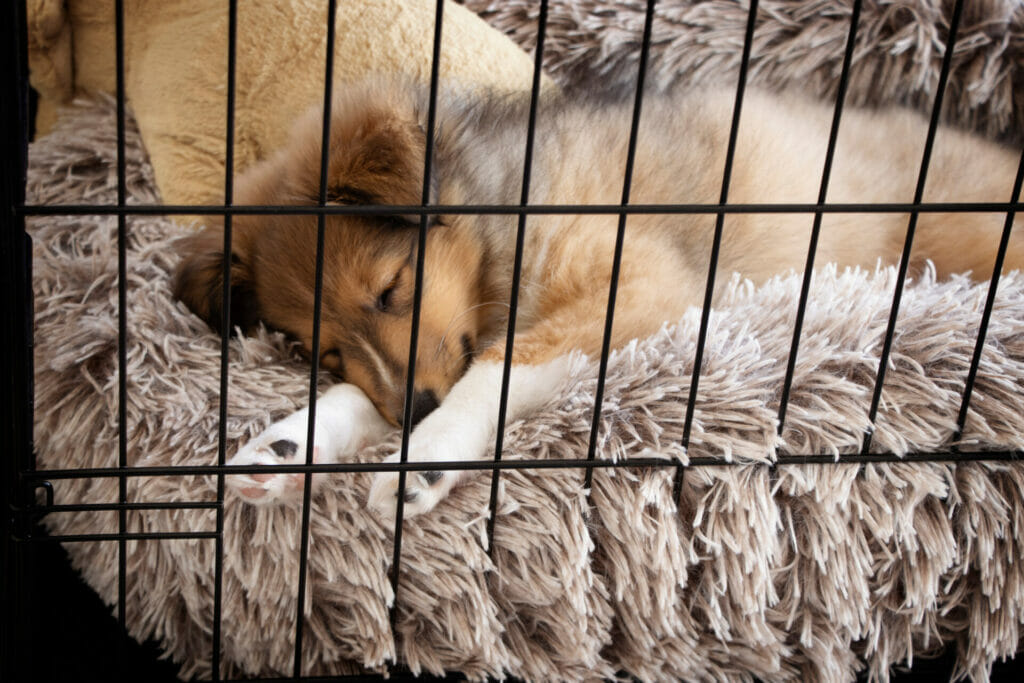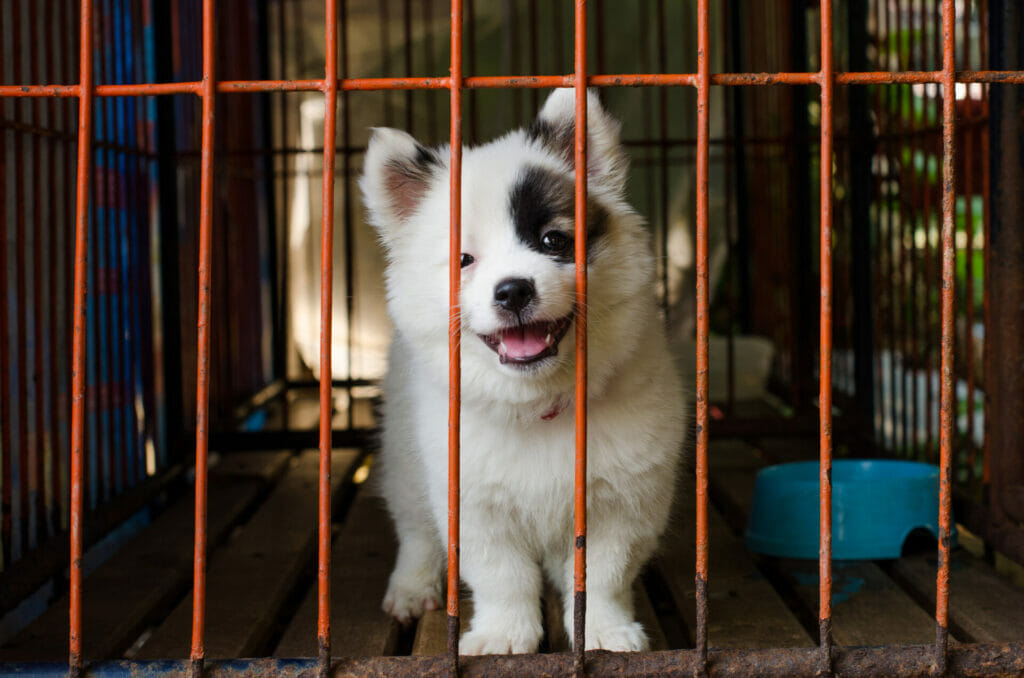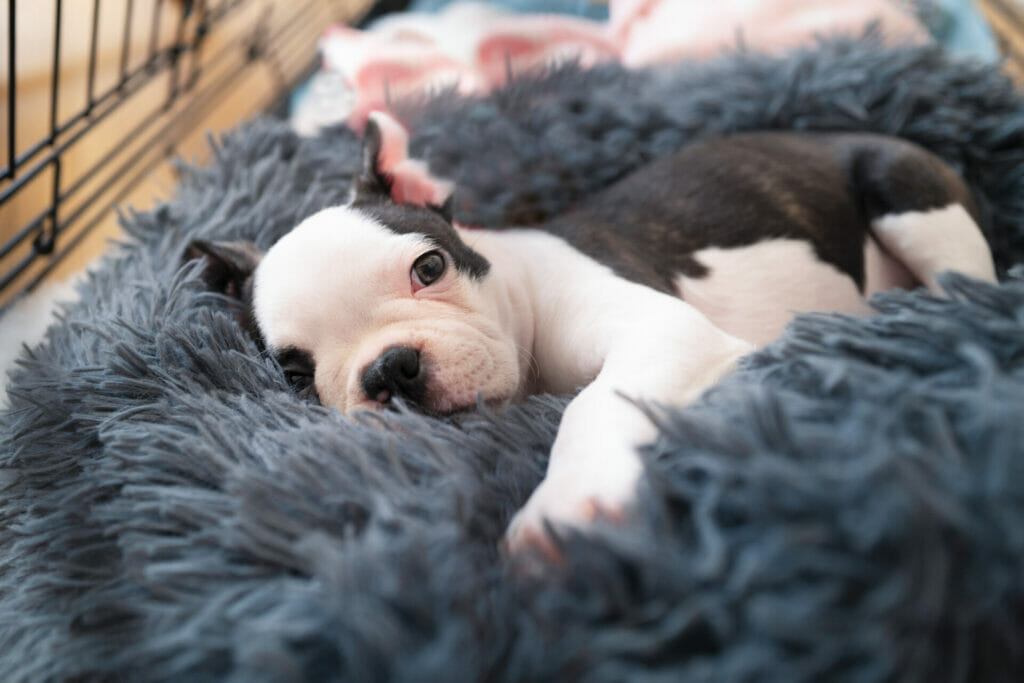It’s time to leave your puppy home alone. Nicole Skeehan CPDT-KA from Philly Unleashed and Robert Haussmann of DogBoy NYC share tips for this milestone. Learn how to prevent separation anxiety and navigate this emotional period for you and your pup.
When is a normal time for you to first leave your puppy alone at home?
The first leave your puppy alone for the first time, it will be stressful for them… this is a stressful activity. Nevertheless, the earlier you can do it, the better it will be for your puppy. Teaching your puppy to be alone and self-soothe develops their independence and confidence. Younger puppies learn to cope well when they’re alone. Once they reach the formative period of puppy adolescence (when anxiety becomes prevalent), it’s harder for them to handle the stress.

How can you set your puppy up for success when leaving them home alone?
Make their crate as comfortable as possible and ensure it’s an appropriate size. Exercise your dog before putting them in the crate to encourage sleep. Another helpful tip? Don’t feed your pup right before crating them; give them at least 20 mins to digest and then run/take them out. Finally, access to enrichment is also key. If your dog misses you, enrichment toys distract them. Consider leaving some of their favorite comfort items, whether it’s a toy or a chew toy to keep them entertained.

How can I add more separation into our lives?
Make daily separation part of your routine from the beginning–dogs thrive on routine. Are you cooking dinner? Give your puppy some alone time in their crate when you cook. They’ll have time to decompress and they won’t distract you. Put them in their crate while watching a movie, or at the gym, or grabbing a coffee. Find separation time on a daily basis and build up to longer durations. After all, the more practice the better they get.
If I practice crate training starting early, is there still a chance my dog will have separation anxiety?
Yes. Some dogs are predisposed to anxiety. While there’s greater chance of success if you start early, 50% of behavior is genetic. So even if you start early, separation anxiety might still develop. Nevertheless, giving your dog the ability to cope with separation, particularly early on, decreases the likelihood of separation anxiety.

What to avoid while practicing separation time?
When you’re leaving your puppy alone, avoid high-traffic areas (common rooms with roommates). Instead put their crate in the bedroom or a quiet place. Sometimes cameras are helpful, but avoid cameras if you know you’ll check every second. If it makes you more anxious to analyze everything the dog is doing, skip the camera. If you do go the camera route, the crying should subside faster and faster as they adjust (even if only 30 seconds more quickly). Also, barking is a learned behavior, so if you ignore their whimpers, they will eventually stop. In contrast, if your dog sees you respond to their bark, they will realize it works and continue to behave that way.
Any final tips for leaving your puppy alone?
It’s rarely easy but you just have to do it. Remember that other pet parents are struggling with this as well and you have to be the calm steady one in the process. If you live in an apartment, buy your neighbors some gifts and say you’re puppy training. You have to put your dog into their crate and you need to learn to be alone yourself, so even if you are working from home, you’re doing yourself a disservice if you’re not practicing this for when you’ll eventually have to leave your puppy alone. Make sure to set aside 2 hours a day to create quietly and learn that skill to prevent vacations or other times apart from being more traumatic for your dog as an adolescent.




















